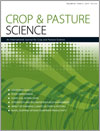CP13153Preferential retention of chromosome regions in derived synthetic wheat lines: a source of novel alleles for wheat improvement
Synthetic bread wheats have been created to increase genetic diversity for wheat breeding. We have used DNA markers to identify regions of chromosome in synthetic bread wheats that are associated with increased grain yield and heavier grain. These chromosome regions are potentially novel and could be used for breeding better wheat varieties with higher yields and heavier grain.




